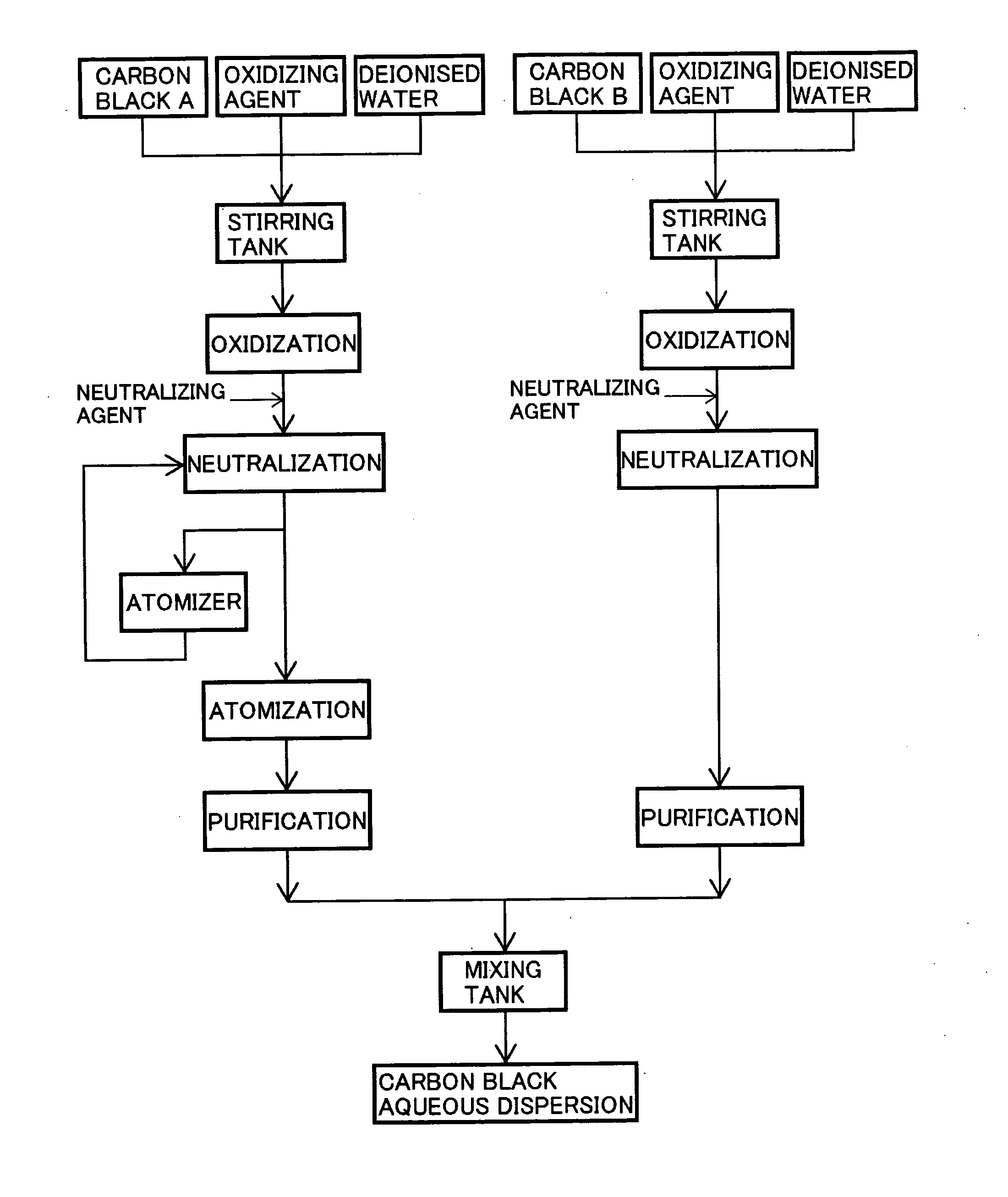Carbon Black Aqueous Pigment and Method of Producing Aqueous Dispersion Thereof
- Summary
- Abstract
- Description
- Claims
- Application Information
AI Technical Summary
Benefits of technology
Problems solved by technology
Method used
Image
Examples
example 1
[0045]Carbon black A and carbon black B having characteristics shown in Table 1 were used.
TABLE 1ABN2SA (m2 / g)290135DBP (cm3 / 100 g)9856Tint (%)156145Carbon black A: Tokablack #8500 (manufactured by Tokai Carbon Co., Ltd.)Carbon black B: Tokablack #7550F (manufactured by Tokai Carbon Co., Ltd.)
[0046]The carbon black A and the carbon black B were individually oxidized using the following method.
[0047]A stirring tank was charged with 3000 ml of 2.0N sodium peroxodisulfate (oxidizing agent aqueous solution) and 150 g of the carbon black. The carbon black was oxidized with stirring to prepare a carbon black slurry. The carbon black was oxidized at 60° C. for 10 hours at a stirring speed of 300 rpm.
[0048]The carbon black was filtered out from the slurry after oxidation, and was neutralized with sodium hydroxide. The resulting product was placed in a stirring tank, and then stirred at 100° C. for three hours to stabilize alkalis.
[0049]The slurry A of the carbon black A subjected to oxidati...
PUM
 Login to View More
Login to View More Abstract
Description
Claims
Application Information
 Login to View More
Login to View More - R&D
- Intellectual Property
- Life Sciences
- Materials
- Tech Scout
- Unparalleled Data Quality
- Higher Quality Content
- 60% Fewer Hallucinations
Browse by: Latest US Patents, China's latest patents, Technical Efficacy Thesaurus, Application Domain, Technology Topic, Popular Technical Reports.
© 2025 PatSnap. All rights reserved.Legal|Privacy policy|Modern Slavery Act Transparency Statement|Sitemap|About US| Contact US: help@patsnap.com

